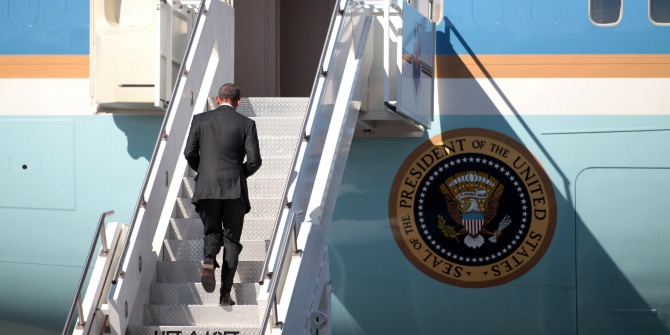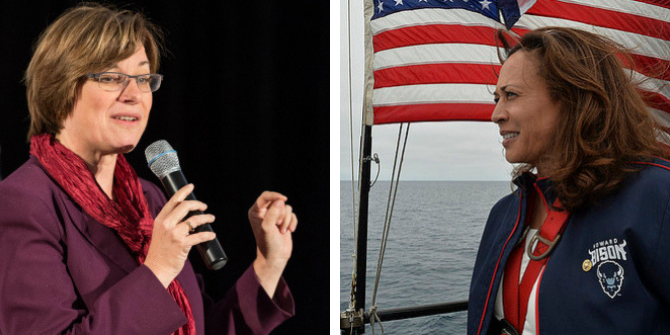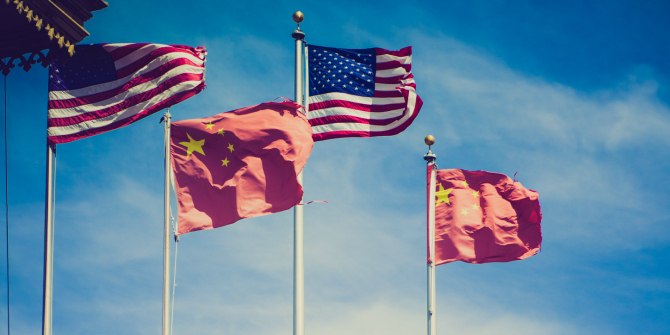 On June 17th, nine African-American members of a Bible study class in the Emanuel African Methodist Episcopal church in Charleston, South Carolina were shot dead by an alleged white supremacist. David Wise charts the links between one of the victims, Pastor Clementa Pinckney, and the revolutionary era slave-owner Charles Cotesworth Pinckney, who helped write the Constitution’s Fugitive Slave Clause, which was cited in South Carolina’s resolution of secession which helped lead to the Civil War. He writes that the shooting is the most recent chapter in the afterhistory of the Civil War.
On June 17th, nine African-American members of a Bible study class in the Emanuel African Methodist Episcopal church in Charleston, South Carolina were shot dead by an alleged white supremacist. David Wise charts the links between one of the victims, Pastor Clementa Pinckney, and the revolutionary era slave-owner Charles Cotesworth Pinckney, who helped write the Constitution’s Fugitive Slave Clause, which was cited in South Carolina’s resolution of secession which helped lead to the Civil War. He writes that the shooting is the most recent chapter in the afterhistory of the Civil War.
It is fitting that Charleston has now become as iconic as Selma or Montgomery in the long struggle for civil rights. No city so completely contains in microcosm the complex history of the American struggle with race and nationhood. On June 17 an assailant entered a Bible study class at the very historic Emanuel African Methodist Episcopal church and slaughtered nine innocent people who were engaged in peaceful worship. The act was reportedly intended to spark racial strife and set off another civil war, just one and a half miles from the place where the first shots of the American Civil War were fired in April 1861. The outcome, however, was diametrically opposite of the violent intruder’s intentions. As President Obama noted in his eloquent eulogy at the funeral of the pastor of the church, Clementa Pinckney: “Oh, but God works in mysterious ways. God has different ideas.” Instead the family members of victims of the senseless killings responded with model Christian forgiveness and launched a remarkable national coming to senses regarding the divisiveness of race hatred and the symbolism of the former battle flag of the Confederacy. Perhaps, just perhaps, those shots fired from the assailant’s handgun will be the last shots in long afterhistory of the Civil War, a history of a century and a half of denial and resistance to the reality of the lost cause of the rebellion.
In the aftermath of the shootings there has been speculation that Clementa Pinckney was a descendant of the slaves owned by Charles Cotesworth Pinckney, who along with his cousin, also of Charleston, was one of the signers of the US Constitution from South Carolina. If so, one of the threads of this story winds through the entire history of the American Republic to its beginnings. Pinckney, was John Adams’ vice presidential running mate in the landmark election of 1800 and was the twice the standard bearer of the Federalist Party for president in 1804 and 1808. Pinckney, a Revolutionary war hero and confidant of General Washington’s demonstrates yet again the adage that must be remembered in coming to a fully balanced reckoning of the inconsistencies of the Founding era. In the sage words of Mark Twain, often attributed to others, that, “To arrive at a just estimate of a renowned man’s character one must judge it by the standards of his time, not ours.” In the eulogy President Obama provided an example of such a balanced view when he said, “Removing the flag from this state’s capitol would not be an act of political correctness; it would not be an insult to the valor of Confederate soldiers. It would simply be an acknowledgment that the cause for which they fought — the cause of slavery — was wrong…”
Confederate flag burned by protesters alongside pictures of Charleston victims, at NYC Stands With Charleston Vigil and Rally 22nd June 2015. Credit: The All-Nite Images (Flickr, CC-BY-SA-2.0)
The thread from Pinckney also runs through the American Civil War. He was a member of the Constitutional Convention that wrote the Fugitive Slave Clause (Article IV, Section 2, Clause 3) into the Constitution and championed the early landmark legislation called the Northwest Ordinance that also had provisions related to runaway slaves which both played a role in the ignominious Dred Scott decision of the Supreme Court, which is often cited as one of the events leading to the war that started in 1861. In fact, South Carolina’s 1860 resolution of secession charged the Federal government with noncompliance with its Constitutional duties, and specifically cited the Fugitive Slave Clause, as one justification of its actions. The first shots of that war were fired just several blocks from Pinckney’s Charleston home and in which fourteen of his descendants played major roles on the Confederate side.
There have been estimates that the ancestors of four out of ten African-Americans entered North America through ports in Charleston. The major slave exchange and the location where delegates from the state met to secede from the Union were all within about a mile of the Emanuel AME Church where the shootings occurred. Yet, as President Obama noted, “Reverend Pinckney once said, ‘Across the South, we have a deep appreciation of history — we haven’t always had a deep appreciation of each other’s history.’” And so, the church building where the tragedy occurred, Mother Emanuel, also presents an example of triumph out of adversity. One of the oldest black congregations in the United States has a history as a place of refuge and worship for slaves and former slaves. It was once burned to the ground by white supremacists, but rebuilt and has hosted such notables as Martin Luther King. On June 17 there was yet another attempt to destroy, but as in the past, only to come forth stronger. If this event is to have true meaning, harkening back to the words of Reverend Pinckney, there must come a profound recognition that “each other’s history” is intertwined and, in fact, one and the same. There is but one country. As the president emphasized verbally at the conclusion of his remarks, we must continue to strive to become a more perfect union, we must become one “United” States.
Please read our comments policy before commenting.
Note: This article gives the views of the author, and not the position of U.S.App– American Politics and Policy, nor of the London School of Economics.
Shortened URL for this post: http://bit.ly/1TArasd
_________________________________
 David W. Wise
David W. Wise
David W. Wise is a retired businessman residing in Annapolis, Maryland. A graduate of The Fletcher School of Law and Diplomacy at Tufts University he published frequently on public policy.







